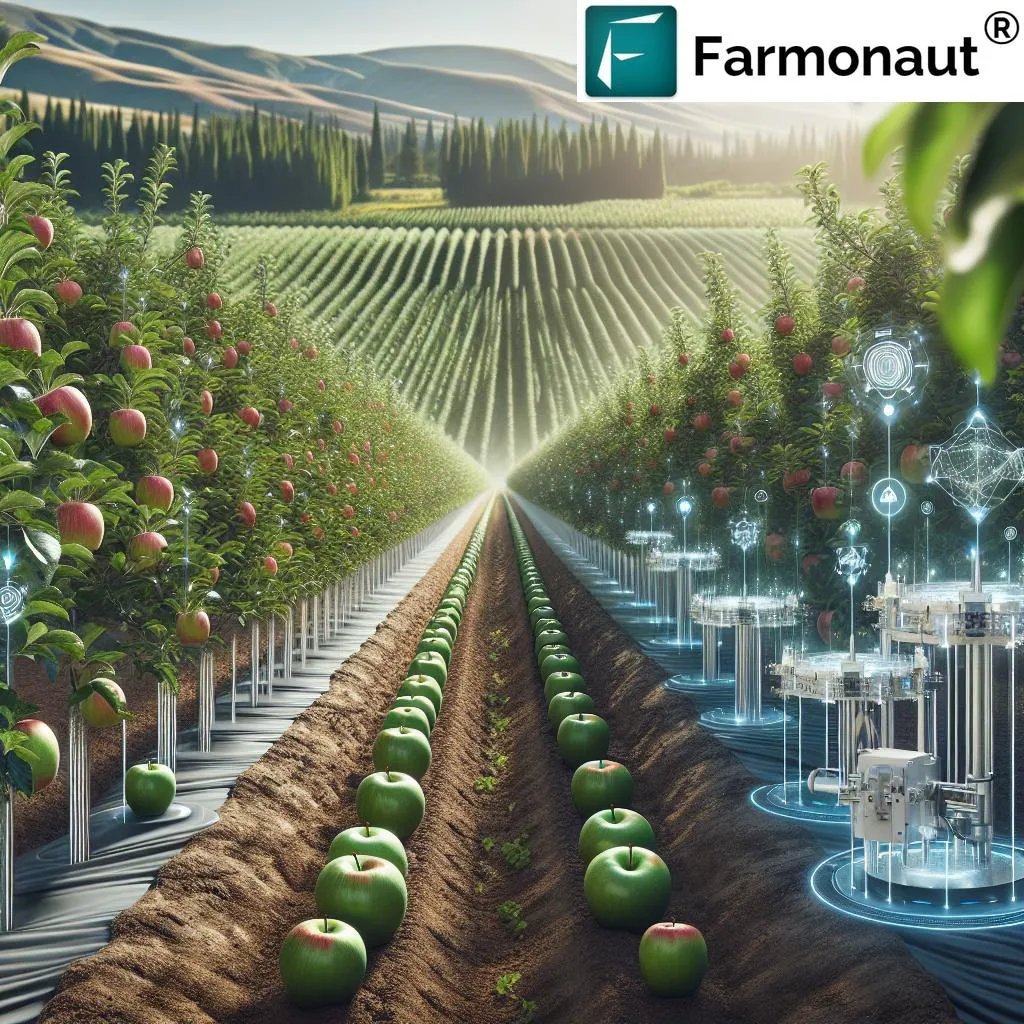In the ever-evolving landscape of precision agriculture, a groundbreaking study published in *Frontiers in Plant Science* is set to revolutionize robotic harvesting, particularly for apples. The research, led by Jianxia Wang, introduces a novel approach that combines cluster segmentation and stereo vision to overcome longstanding challenges in automated fruit picking.
The study addresses critical issues that have hindered the widespread adoption of robotic harvesting systems, such as clustered fruits, varying illumination, and inconsistent depth perception. Traditional deep learning models, while accurate in 2D detection, often fall short in providing the precise 3D localisation required for robotic picking. They also demand large annotated datasets and high computational resources, making them less practical for real-world applications.
The proposed method integrates an enhanced K-Means clustering segmentation algorithm with a stereo-vision system, enabling accurate 3D apple localisation. By fusing multi-feature descriptors—including colour, morphology, and texture—the researchers improved segmentation robustness. A block-matching stereo model was employed to compute disparity and derive 3D coordinates, offering a more reliable solution for complex orchard environments.
The results are impressive. The method achieved over 91% detection accuracy and less than 1% localisation error across challenging orchard conditions. Compared to other models like Faster R-CNN and YOLOv7, it maintained higher recognition accuracy and lower mean coordinate deviation, even under high fruit overlap and variable lighting. Depth estimation errors ranged from 0.4% to 0.97% at distances of 800–1100 mm, confirming high spatial accuracy.
“This method provides a stable and robust solution for 3D localisation and segmentation without the need for large training datasets or high-performance hardware,” said lead author Jianxia Wang. “Its low computational demand and strong performance under diverse orchard conditions make it suitable for real-time robotic harvesting.”
The commercial implications for the agriculture sector are substantial. Automated harvesting systems could significantly reduce labour costs, increase efficiency, and improve yield quality. By enabling robots to navigate complex orchard environments with precision, this technology could transform the way fruits are harvested, making it a game-changer for the industry.
As the research moves forward, the team plans to focus on large-scale orchard deployment, parallel optimisation, and adaptation to additional fruit types. The potential for this technology to extend beyond apples and into other crops is vast, promising a future where robotic harvesting becomes a standard practice in precision agriculture.
With its innovative approach and promising results, this study not only advances the field of orchard robotics but also paves the way for more sustainable and efficient agricultural practices. As the world continues to grapple with labour shortages and the need for sustainable farming, technologies like this could not come at a better time.

